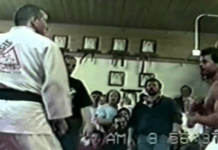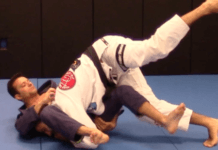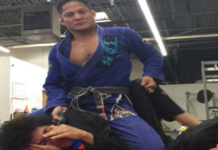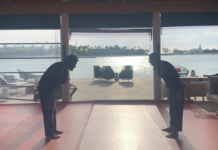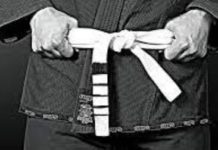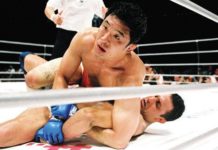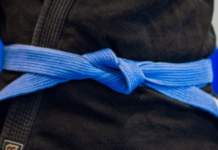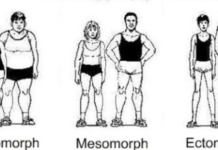There are two sides to the coin of Brazilian Jiu-Jitsu. The first side is the sports side – the one that we see in the IBJJF, ADCC, POLARIS, and EBI tournaments around the world. The second side is the true martial arts side – the BJJ skillsets that you can use in order to defend yourself and do serious damage in a real fight. Now, there are a few important differences between an MMA fight and a real fight – but, in terms of grappling, the two are pretty much the same. So, the main difference lies between the sports aspect and the fighting aspect of BJJ. You can learn more about the two in our article below.
Grappling under sports rules
The first thing to note is that, if you’re grappling in a sports setting, you won’t be allowed to use direct strikes to harm your opponent. The most notable exception to this rule are the so-called combat jiu-jitsu tournaments, hosted by Eddie Bravo, where the two opponents can strike with open palms. And as you can imagine, this drastically changes the entire game.
For one, there are some sports-specific moves that only apply in sports-grappling. For example, the next time you’re in an MMA fight, try entering the deep half-guard position. If you know elementary fighting and elementary BJJ positions – then you know that we are joking, and that you should *never* enter the deep half-guard if your opponent is allowed to strike you. The reason for this is that your face will be very vulnerable and open to strikes. The reason why we added the “*” symbol at the sides of the word “never” in the previous section is that there are always exceptions to any rule – this rule included. The deep half guard can be effective in some cases even in an MMA fight – but don’t count on it though.
And there are several other positions that are similar to this. For example, the 50/50 guard is very popular in sports grappling, but not nearly as popular in MMA fights. And the reason for this, once again, is that your face will become vulnerable to direct strikes with the hands and the legs.
So, grappling is a lot safer under sports rules. There is still a possibility to injure yourself or your opponent but it’s a lot lower than what happens in MMA fights. And this is despite all the inherent volatility of BJJ and grappling in general.
Another thing to note is that there are many BJJ schools that favor the GI. You can successfully use the GI as a powerful ally in your battle against your opponent. It opens up your game to using many different new chokes and pins against your opponent. And this is simply not available in an MMA fight – since the GI is banned in most MMA organizations. Long gone are the days when Royce Gracie was allowed to enter the octagon wearing sneakers and his Gracie GI.
Grappling under MMA rules
There is an interview done with the grandmaster of BJJ himself, Rickson Gracie, where he sheds light as to why he really dislikes the so-called modern BJJ positions and techniques – like the aforementioned 50/50 guard. And he claims – rightfully so – that BJJ is a self-defense martial art at the first and foremost. So, these techniques wouldn’t work outside the sports mats.
And this is not to say that BJJ and grappling and ineffective in a real fight – far from it. A superior grappling skillset will not only make you a force to be reckoned with on the ground – but also you will gain a lot of confidence in your stand up game, knowing that you’re safe if things take a turn for the ground.
The two most critical skillsets that you must learn in grappling for MMA is, one, taking your opponent down and, two, defending the takedowns yourself. You see, if your opponent slams you on the ground and if you have the bottom closed guard position – then you’re in a serious disadvantage under MMA rules. True, you still have the regular BJJ sweeps and submissions that you can try and execute from the ground – but this is a lot harder to do if your opponent wears no clothes and if he or she is sweaty. And on the flip side – your opponent can use all his might, accelerated with the full force of gravity, to deal damage to you with direct strikes.
And if you have watched MMA fights, then you know that there are frequent KOs that happen from the regular full guard position – especially in the higher weight divisions where one punch is all it takes to do a full KO. So, if you’re in the ground position, you need to act fast and either stand up, submit or sweep your opponent as soon as possible.
MMA simplifies the grappling aspect. There’s full guard, side control, mount, and back control as the main positions. Sure, there are variations, but these are the positions that are the most effective and from these positions you can do a lot of damage to your opponent. There’s no need for deep half guard and fifty-fifty in MMA.
In conclusion
So, we can conclude that there are vast differences between sports-specific grappling and MMA-specific grappling. They alter the competitor’s gameplan altogether. That being said, you need to learn what you want to be. Do you want to be an MMA fighter and learn grappling skills that will serve to improve your game in real fights? Then alter your grappling studies and performance appropriately. And vice-versa. To that end, we hope that you will have a lot of success using the grappling skills both for MMA and sports grappling competitions. There are many instances when people have gotten good in both the categories. It’s not an impossible thing to do – albeit it can be very hard. But your journey to mastery will definitely be worth your while in the end.



